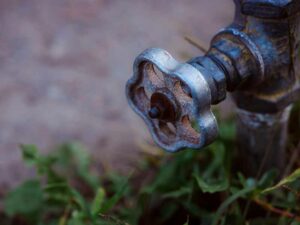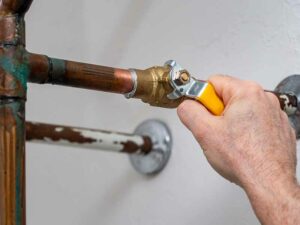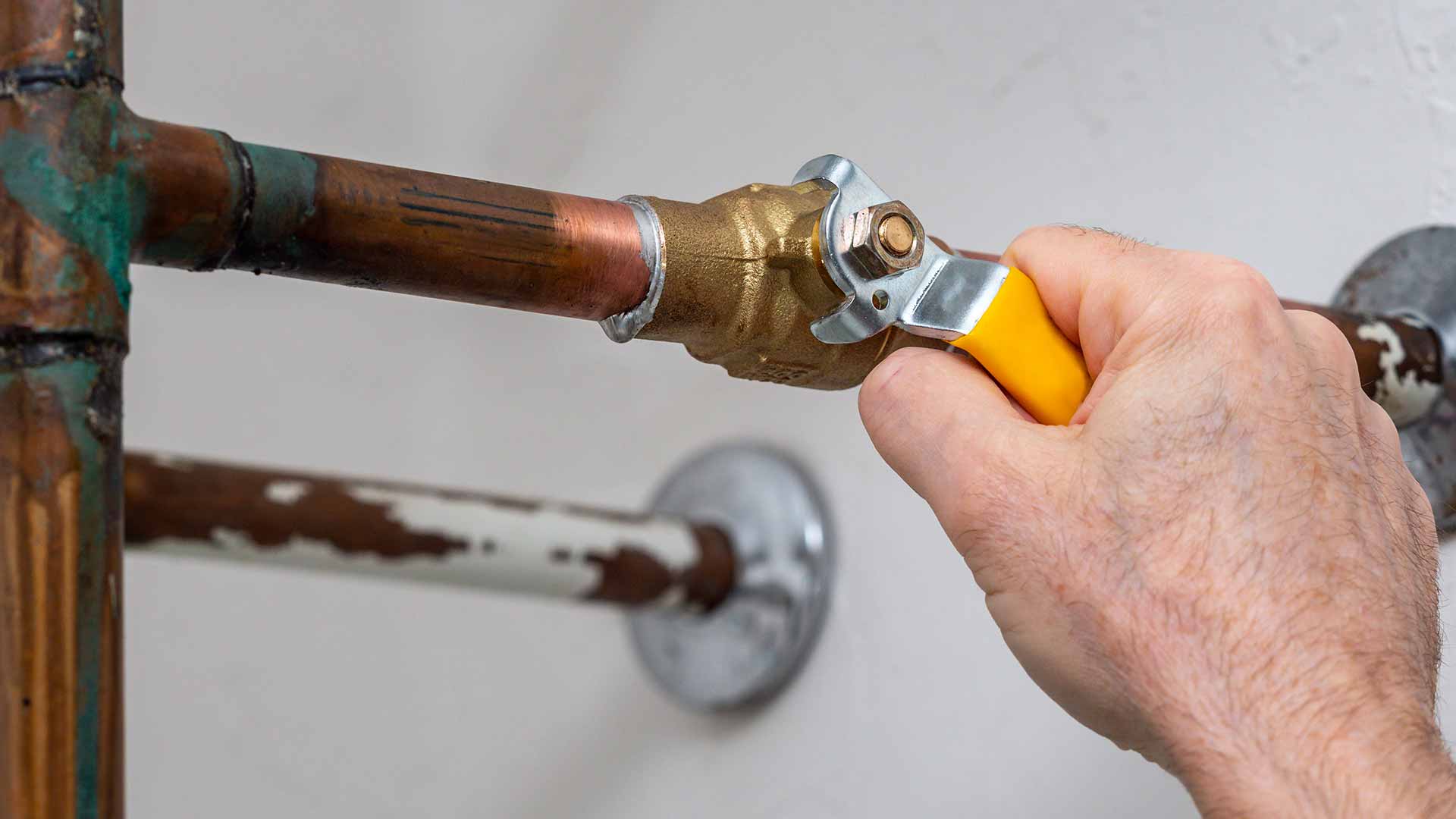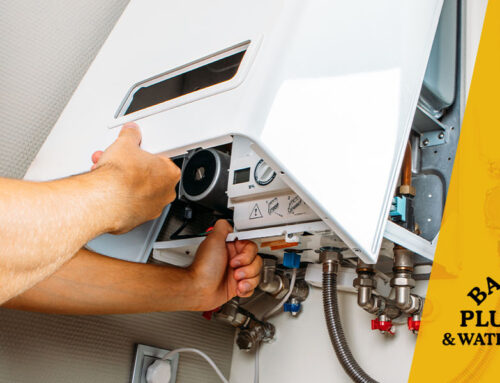A minor upgrade can make a huge difference
There are some things you never think about until you are forced to:
Where is your certified birth certificate?
What’s your emergency contact’s phone number?
What’s your blood type?
How do you jump-start a car?
Where is the water shut off to your house?
I’ll be honest. I could probably walk you through how to jump-start your car. But I’ll leave that to an expert in car repair.
I can help you with where your water shut-off valve is, what it does, and why it’s essential to ensure it’s in good working order.

Gate Valve
What is a water shut-off valve?
As the name implies, it’s the place in your home where the water supply enters. And there’s a knob, handle, lever, or handwheel to start or stop water flow into your home.
A valve inside the supply pipe is attached to the handle responsible for stopping the water flow.
Water shut-off valves are usually gate valves or ball valves.

Ball Valve
Gate valves are often found in older homes and take longer to shut off the water supply completely.
Ball valves are found in newer homes, require more space for the handle, are more expensive, and turn off the water flow immediately.
Why are water shut-off valves critical?
Unless you’ve had a plumbing emergency, you may not know where your home’s water shut-off is. And if you’ve had the misfortune of experiencing a major water leak or flooding in your home, you know that being aware of where your shut-off valve is before an emergency is critical.
Times when you need to shut off the water supply to your home:
- Interior water leak
- Flooding
- Plumbing repair or fixture replacement
- Extended absence/vacation
- Frozen pipes
Stopping the water from damaging or further damaging your home is of the utmost importance.
Where is the water shut-off valve located?
Shut-off valves aren’t located in the same spot in every house, but here’s where you should start looking for yours:
The lowest level of your house
The front wall of your home
Near your water heater
Near pipes or a plumbing fixture, i.e., under the sink, near the toilet, in the wall behind an access panel
Please don’t mistake a specific plumbing fixture’s supply valves for your home’s water shut-off valve. You’ll find a short pipe with a knob near each toilet and sink that will turn off the water to that fixture, not the entire house.
Anyone left alone in your home should know where the shut-off valve is.
Is your water shut-off valve in working order?
Now that you’ve located your home’s main water supply shut-off valve and shown your family and pet sitter where it is, you must determine if it’s in good working order.
Four reasons to replace your main water shut-off valve:
- Age of your house
- Type of handle, i.e., knob, handwheel, lever
- Visible rust or corrosion
- Ease of use
Age of your house
If your house is over 25 years old, the builder likely installed a gate valve as your main shut-off valve. Gate valves do not last as long as ball valves. Upgrading to a ball valve is a relatively simple project. One of our technicians could easily replace your shut-off valve at your home for a service call or a fixture replacement.
Type of handle
The type of handle attached to your shut-off valve will give you the best idea of what kind of valve you have. A knob handle, as you’d find on your outdoor water hose faucet, likely means you have a gate valve. If you have a lever or straight handle, you have a ball valve.
Having a ball valve with a straight handle is a huge benefit during an emergency. Ball valves only require a quarter turn to shut off your water supply completely. Plus, you can look at a ball valve handle and know whether it is open or closed.
- Open – The handle is parallel to the pipe
- Closed – The handle is perpendicular to the pipe
Visible rust or corrosion
Regardless of the type of valve, rust or corrosion is a sign you need to replace your water shut-off valve.
Ease of use
Once you’ve located your main water supply shut-off valve, test it. We recommend trying it during regular business hours in case it gets stuck. Otherwise, you’ll be without running water overnight or for a few days. Or be saddled with an emergency plumbing bill. Does it turn smoothly? Does it feel stuck? Does the handle feel too loose? Could you quickly turn it during an emergency, or will it require a feat of strength?
Act Now: Install a new water shut-off valve before an unforeseen emergency occurs.
It may seem small; technically, a water shut-off valve is a small device and project. But that small device has a significant impact on your home.
Call us for a free, on-site estimate if you find an old or corroded shut-off valve. We can upgrade your shut-off valve as an add-on service while we’re on a service call or installing water-saving devices to your showers and sinks.
Here’s my personal promise to you: When you call with a question or to schedule an on-site estimate, there will be no pressure. No obligation. We will not sell you a plumbing solution you don’t need or want.
Questions? Give us a call at (925) 438-6326.
Thanks for letting us be your trusted plumber.

Phil Barnett
President of Barnett Plumbing & Water Heaters






